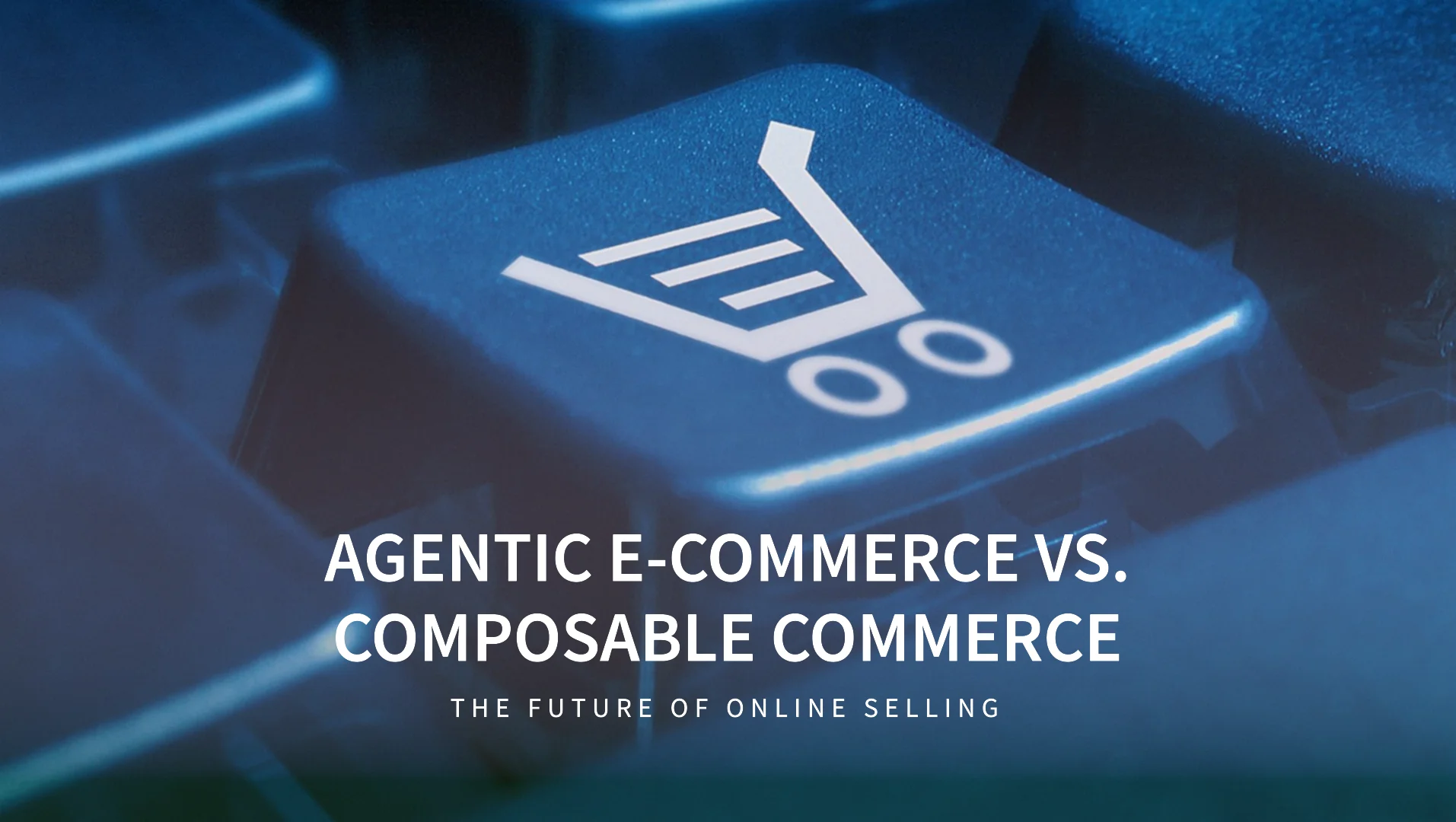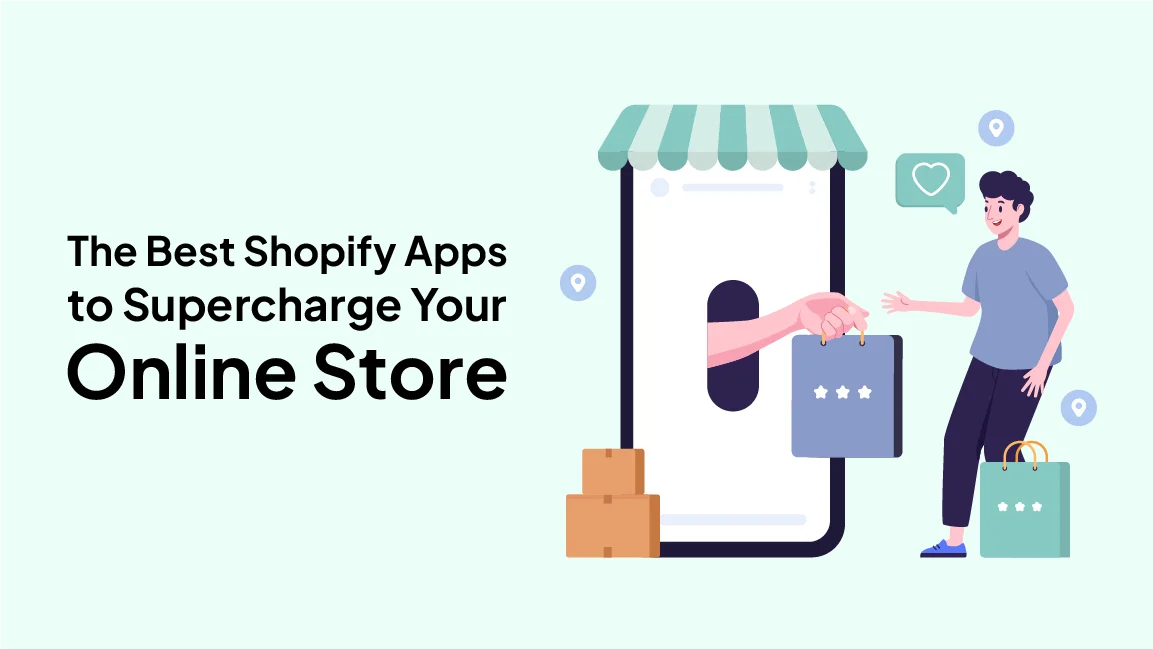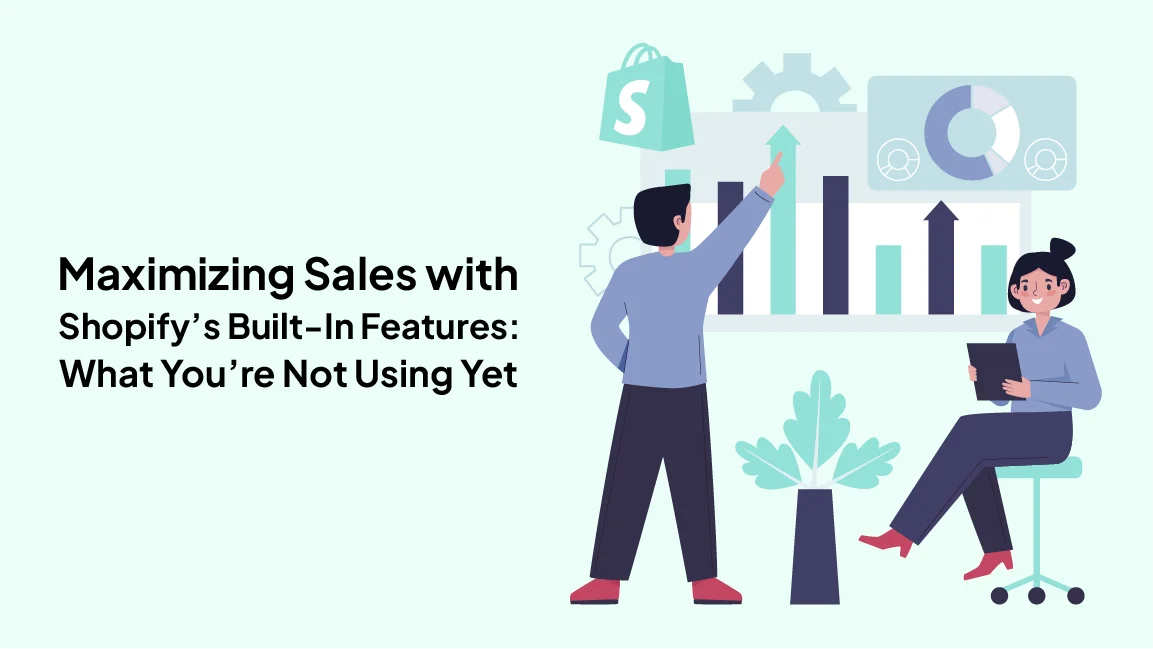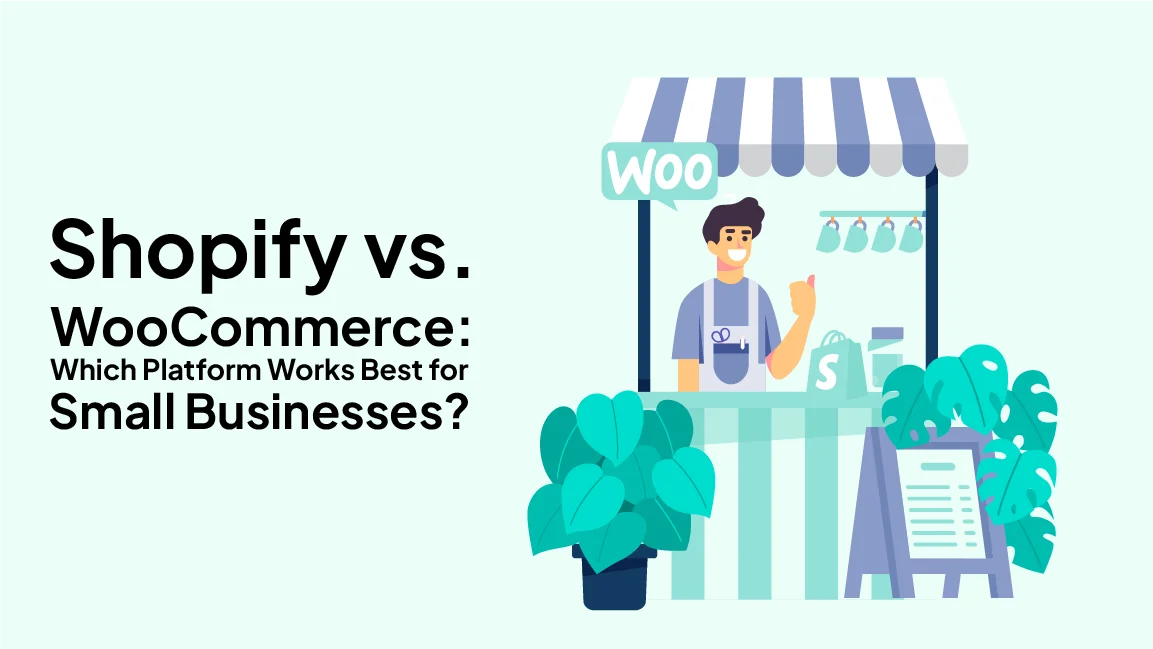E-commerce has come a long way since the early days of simple online catalogs. What started as a way to sell products digitally has grown into a multi-trillion-dollar industry.
Today, businesses face an exciting yet complex challenge: choosing the right approach to deliver the best online shopping experiences. Two major strategies dominate the conversation: Agentic E-commerce and Composable Commerce. Both are innovative in their own way, but they cater to different business needs.
Let’s take a personal, easy-to-understand look at these two approaches, explore their pros and cons, and figure out which one might work best for your business.
What Is Agentic E-Commerce?
Agentic E-commerce makes online shopping smarter and more personalized. It’s like having a digital assistant who knows what you like, understands your habits, and suggests exactly what you need without you even asking. This approach turns browsing into a tailored experience that feels personal.
It’s powered by AI and machine learning, which analyze data like your shopping history, preferences, and trends. By focusing on what works best for you, it creates a seamless connection between your needs and the products or services offered, making every interaction feel relevant and helpful.
How Does It Work?
Have you ever browsed an online store and noticed that the products displayed feel like they were chosen just for you. That’s no coincidence. Like we mentioned, Agentic E-commerce platforms analyze customer behavior, purchase history, and even external factors like trends or weather to offer hyper-personalized recommendations.
Here are some ways Agentic E-commerce works:
- AI-Powered Insights: Advanced systems analyze what customers like, their shopping habits, and trends to recommend products or make smart suggestions.
- Autonomous Agents: These are AI programs that work behind the scenes, doing things like restocking items, finding the best deals, or even managing customer subscriptions without human input.
- Constant Learning: The platform continuously updates itself based on new information, making it better at predicting and meeting customer needs.
Real-World Use Cases
- Amazon: The platform’s recommendation engine suggests products based on what you’ve browsed, bought, or added to your wishlist. For example, if you’ve recently searched for fitness gear, Amazon might show you trending workout equipment or related items.
- Sephora: Sephora’s app uses AI to recommend skincare and beauty products that are tailored to individual users. It even has a virtual assistant that provides makeup tutorials based on the products you own or want to buy.
What Is Composable Commerce?
Now, let’s talk about Composable Commerce, the best-of-the-breed approach to modern e-commerce solutions. If Agentic E-commerce is like having a personal assistant, Composable Commerce is like building your dream house.
Instead of relying on one pre-made solution, you’re free to pick and choose the best components to create a system that fits your exact needs.
How Does It Work?
Composable Commerce operates on the MACH principle, which stands for Microservices, API-first, Cloud-based and Headless. Each component is modular, independent, and optimized for specific tasks.
- Microservices: Each small app has a specific job, like handling payments, managing products, or processing orders, so you can swap or upgrade them anytime.
- API-First: APIs (Application Programming Interfaces) enable seamless communication between different tools and services. This ensures all components can work together efficiently.
- Cloud-Native: Composable systems leverage cloud technology for scalability and reliability. Cloud-native applications can easily handle traffic spikes, ensuring a smooth shopping experience for customers.
- Headless Commerce: This separates how your store looks (front-end) from how it works behind the scenes (back-end), giving you the freedom to design customer experiences however you want.
Real-World Use Cases
- Coca-Cola: The beverage giant ‘Coca-Cola’ leverages composable commerce to customize its e-commerce platform for different markets. By using microservices, they can quickly adapt to local preferences, integrate regional payment methods, and roll out updates without downtime.
- Best Buy: Best Buy uses a MACH-based system to provide real-time inventory updates, personalized product recommendations, and flexible fulfillment options. The approach ensures a consistent customer experience across all channels.

Agentic vs. Composable: What’s the Difference?
While both approaches aim to revolutionize e-commerce, they take fundamentally different paths. Let’s break it down:
Core Philosophy
Agentic E-commerce centers on AI-driven automation and personalization to enhance the customer experience, creating a system that actively engages and assists shoppers.
Composable Commerce, by contrast, is rooted in modular, customizable architecture, allowing businesses to design and adapt their platforms to meet specific needs.
Technology Focus
Agentic E-commerce leans on AI, machine learning, and automation to anticipate customer needs and automate operations.
Composable Commerce emphasizes APIs, microservices, and integration, providing businesses the tools to assemble their ideal system.
Business Fit
Agentic E-commerce is perfect for businesses seeking out-of-the-box AI solutions that deliver quick personalization and automation without heavy customization.
Composable Commerce suits companies prioritizing flexibility and control, enabling them to create unique systems tailored to their goals.
Scalability and Customer Experience
Agentic E-commerce scales efficiently through intelligent automation while delivering proactive and highly personalized experiences to customers.
Composable Commerce scales by adding or replacing components, tailoring the system to specific business goals while offering flexibility in its approach to customer engagement.
The Benefits of Agentic E-Commerce
Agentic E-commerce is like having a digital concierge for your online store. Let’s look at its standout benefits:
1. Unparalleled Personalization
Have you ever wondered how Netflix seems to know exactly what you want to watch? Agentic E-commerce applies the same principle. By analyzing customer behavior, preferences, and past interactions, these systems deliver hyper-relevant experiences.
For example, a fashion retailer could show you outfits based on the weather in your area or your favorite colors. This level of personalization can dramatically increase sales and customer loyalty.
2. Automation and Efficiency
Running an e-commerce business involves countless repetitive tasks like inventory updates, customer inquiries, and order processing. Agentic systems automate these processes, and frees up time for businesses to focus on strategy and growth.
3. Proactive Engagement
Instead of waiting for customers to find what they need, Agentic platforms actively guide them. Chatbots, virtual assistants, and personalized recommendations create a seamless journey from browsing to checkout.
The Benefits of Composable Commerce
If Agentic E-commerce is like a concierge, Composable Commerce is like being your own architect. Here’s why businesses love it:
1. Ultimate Flexibility
No two businesses are the same, so why should their e-commerce systems be? Composable Commerce allows companies to pick and choose the best tools for their needs. If a better search engine or payment gateway comes along, they can integrate it without overhauling the entire system.
2. Cost Efficiency
By choosing only the components they need, businesses can avoid paying for unnecessary features. This modular approach ensures that resources are spent where they matter most.
3. Future-Proofing
The tech world moves fast. Composable Commerce allows businesses to stay ahead by adopting new technologies as they emerge. Unlike monolithic systems, which can be slow to adapt, composable setups are built for agility.
Challenges of Each Approach
Agentic E-Commerce Challenges:
- High Reliance on AI: AI systems are only as good as the data they’re fed. Building, maintaining, and optimizing these systems requires continuous data collection and significant technical expertise.
- Privacy Concerns: Hyper-personalization often involves collecting sensitive customer data, which can raise privacy and security concerns. Businesses must ensure compliance with regulations like GDPR and prioritize ethical data practices.
- Cost of Implementation: AI-driven systems can be expensive to develop and maintain, making them less accessible to smaller businesses with limited budgets.
Composable Commerce Challenges:
- Complexity in Integration: Managing multiple components requires a robust IT infrastructure and careful planning to ensure seamless functionality. Integration issues can arise when tools don’t play well together.
- Need for Technical Expertise: Building and maintaining a composable system requires skilled developers and IT teams, which can be a barrier for businesses without in-house technical expertise.
- Time-Consuming Setup: The flexibility of composable systems comes at the cost of time. Designing, testing, and deploying a fully functional setup can take significantly longer than adopting pre-built solutions.
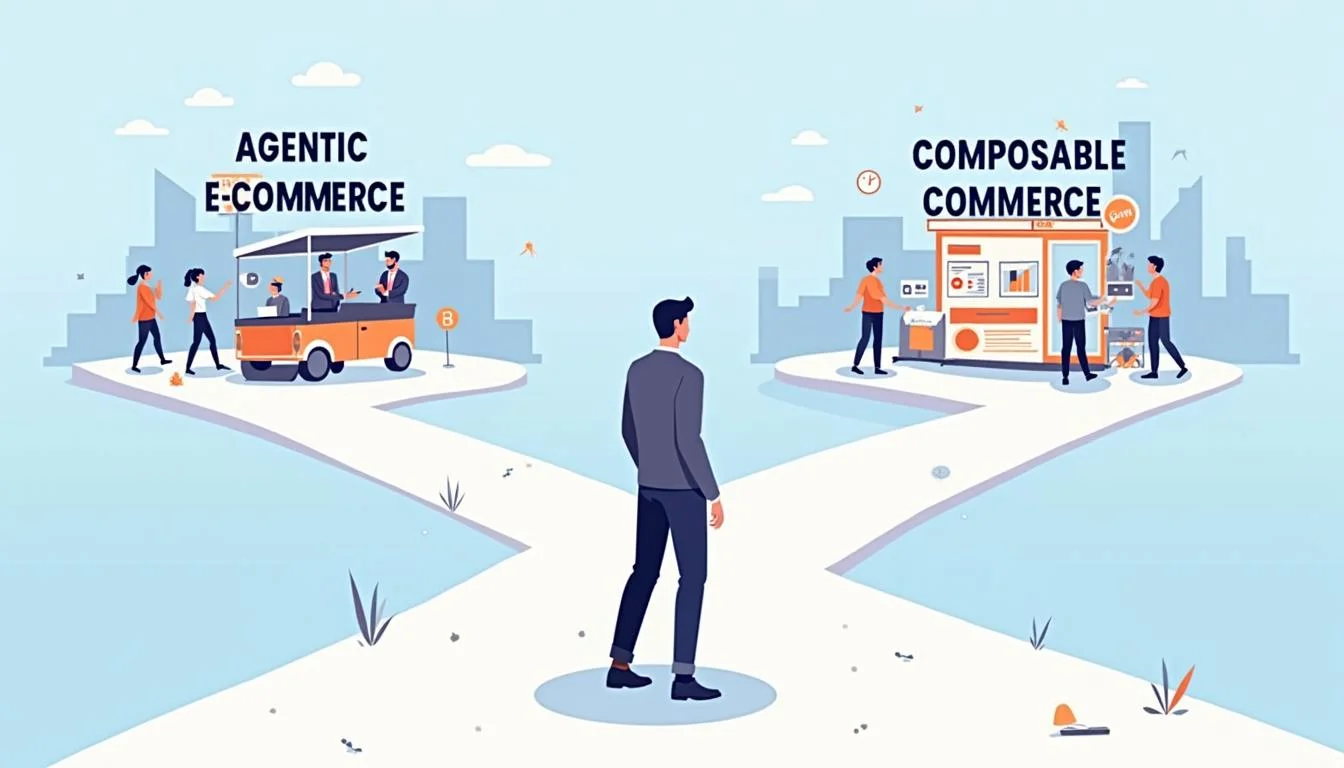
Which Approach Is Right for You?
Choose Agentic E-Commerce If:
1. You Prioritize Personalization and Customer Engagement
If your business thrives on delivering a deeply personalized shopping experience, Agentic E-commerce is the way to go. This approach is ideal for industries like fashion, beauty, or entertainment, where understanding and anticipating customer preferences can significantly enhance customer satisfaction and loyalty.
2. You’re Ready to Invest in AI Technologies and Data Analytics
Agentic systems rely heavily on AI and machine learning, which require significant investment in technology, infrastructure, and expertise. If your business has the resources to collect and analyze large amounts of data, you’ll be able to fully unlock the potential of this approach.
3. You Need an Out-of-the-Box Solution
Businesses that want quick implementation with minimal customization will appreciate Agentic E-commerce. These systems come with built-in capabilities like AI-powered chatbots, automated inventory management, and personalized recommendations, making them a great choice for companies that want a fast, efficient solution to enhance customer experience.
Choose Composable Commerce If:
1. Flexibility and Scalability Are Key for Your Business
Composable Commerce is ideal for businesses operating in dynamic industries where adaptability is crucial.
For instance, if your business frequently introduces new products, experiments with marketing strategies, or enters new markets, you’ll benefit from the ability to swap or upgrade components without disrupting your entire system.
2. You Have Technical Expertise or Resources
Building and maintaining a composable system requires a skilled IT team or access to developers who understand APIs, microservices, and system integration.
If your organization has the technical expertise, or the budget to hire it, you’ll be able to create a robust and fully customized solution tailored to your needs.
3. You Want to Future-Proof Your Platform
The world of e-commerce technology evolves rapidly. Composable Commerce ensures your business can stay ahead by adopting the latest tools and innovations as they emerge.
Unlike monolithic systems, which can lock you into a specific vendor’s ecosystem, composable setups are designed for long-term agility and growth.
The Future: Hybrid Models
The future of e-commerce might not be a choice between Agentic and Composable Commerce but a combination of the two. Hybrid models allow businesses to:
- Use AI-driven tools for personalization while maintaining the flexibility of modular systems.
- Offer tailored customer experiences without being locked into a single platform.
- Adapt quickly to new technologies and customer expectations.
For example, a retailer could use a composable system for backend operations while leveraging AI for customer-facing interactions. This way, they get the best of both worlds.
Final Thoughts
Agentic E-commerce and Composable Commerce are reimagining the e-commerce industry. While Agentic focuses on creating personalized, proactive experiences, Composable Commerce emphasizes flexibility and customization. Choosing the right approach depends on your business goals, resources, and technical capabilities.
At BrandCrock, we understand that every business is different and unique. Whether you’re looking to build a modular system from scratch or integrate AI-driven tools into your existing platform, we’re here to help. Let’s navigate the future of e-commerce together.
Contact us today to discover the solutions tailored to your business needs.



